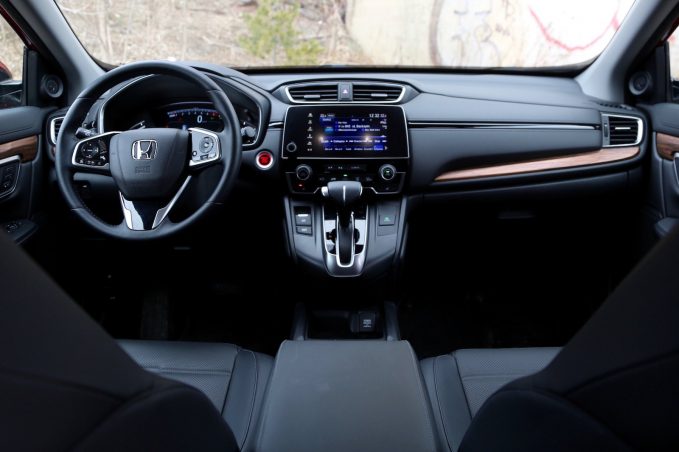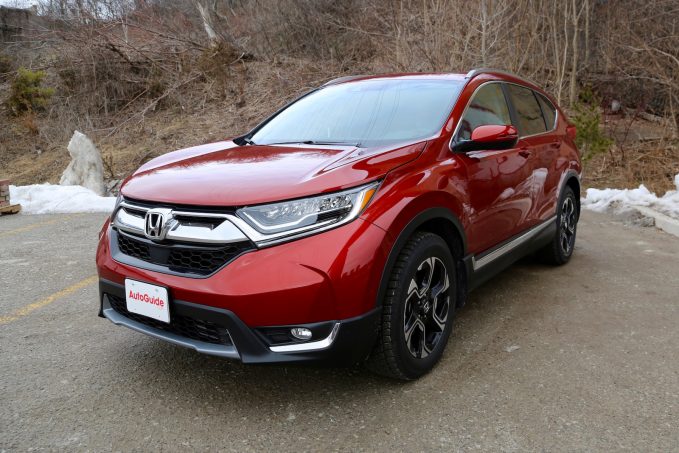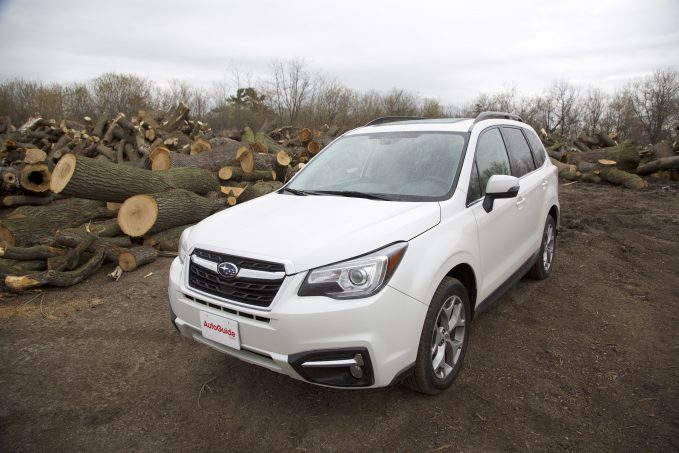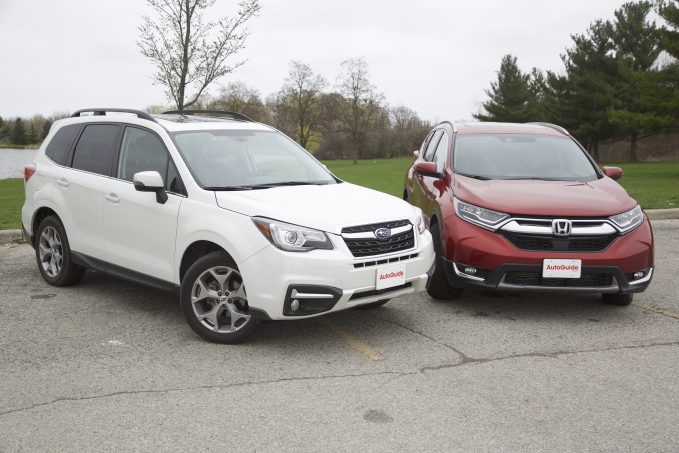The Forester is one of Subaru’s best selling vehicles, and there are a number of great reasons for it to be so successful, but to properly measure its ability to serve customers, we have to compare it to another popular crossover.
Fortunately, we had our long-term 2017 Honda CR-V on hand, allowing us to see just how the Subaru stacks up.
First, let’s recap the Honda offering, which is always among the top picks in the family crossover market. All-new this year, the CR-V boasts a new platform and is available with a fuel-efficient yet powerful turbocharged engine. Our editors called it a perfect choice for families and it won our Utility Vehicle of the Year award against some competitive new vehicles.
Honda Cabin Impresses
Jump into the CR-V and you’re greeted with a spacious yet gorgeous cabin. The trunk offers nearly 40 cubic feet of storage and when you fold the rear seats down, that expands to 75.8. Families will love that capability and will find the CR-V to be equally thoughtful in terms of cabin storage. There’s a massive storage space in the armrest, for example, and there are other cubbies everywhere.
In addition to the cabin being spacious and comfortable, it looks pretty high-end as well. The quality of the materials is quite good and you may mistake it for something from a more premium brand.
ALSO SEE: 2017 Honda CR-V vs 2017 Ford Escape
Furthermore, the layout of the HVAC controls is intuitive and while the infotainment system isn’t perfect, it includes Apple CarPlay and Android Auto Support, which is a pretty big deal these days. The gauge cluster is also functional and attractive with futuristic looking displays that provide the driver with a lot of information in a clear way.
Turbo Honda is Powerful and Efficient
On the road, the CR-V feels like a big car. The steering is heavy and precise, and the car feels like a big safe vault when driving down the road. It’s not quiet like a vault though, with the buzz of the engine and groan of the continuously variable transmission noticeable while driving.
That turbocharged powertrain and CVT work pretty well in tandem, however. You can pass with confidence in the CR-V and the fuel economy delivered by this 1.5-liter turbocharged four-cylinder engine is impressive. Expect around 30 mpg combined with all-wheel drive models.
On the other hand, it’s not a perfect system. The turbocharged engine feels a bit laggy, which is really noticeable after driving the naturally aspirated Subaru.
An important part of both of these vehicles is the available safety technology and fortunately, both are highly ranked by the IIHS, earning the Top Safety Pick+ rating. Both crossovers include forward collision warning, adaptive cruise control, blind-spot warning system, and lane-keep assist.
Safety systems in the two cars vary in terms of performance. The Honda has a good adaptive cruise control system, but some of its warning systems like the forward collision and the blind spot monitoring system are a bit too sensitive. The Subaru’s EyeSight system is effective as well, but the car’s latest and possibly best safety feature is the ability to automatically apply brakes if the car senses that you’re reversing into an obstacle or incoming car. Think of all the busy parking lots you’ve frequented, and this feature will prove to be extremely useful.
Compare Specs
The Subaru obviously does much more than stop you from bumping into carts at the grocery story. It also has a ton of cargo space, but the Honda edges it out by just a bit. One element that is really appreciated in the Forester is large windows that not only make the cabin feel nice and airy but makes the car easier to drive thanks to great sightlines.
Like the Honda, this Forester has a cabin full of high-end touches. The brown leather is particularly noteworthy and gets “oohs and ahhs” from passengers. The infotainment system is a bit improved over past offerings but can still be frustrating to use. The silver lining is that this model gets a fantastic upgraded sound system from Harmon/Kardon.
On the road, the Forester feels light and nimble, which is a stark contrast to the Honda. It features a hyperactive throttle feel and the steering is also extremely light. The CVT in this car is also quite responsive, and it’s worth pointing out that the Forester comes standard with permanent four-wheel drive. The 2.5-liter flat-four-cylinder engine has just 170 horsepower and 174 lb-ft of torque, however, meaning it feels sluggish in comparison to the CR-V and it needs to be revved quite high to get some passing power. If you wanted more power with the Subaru, you can get that with a performance-oriented Forester XT model.
Enthusiastic drivers might like the Subaru better, but for daily family commuting duties, the CR-V is the more comfortable and liveable choice. It’s also a bit more fuel efficient as well.
The 2017 Forester starts at $23,470 with destination in the U.S., a price that includes a six-speed manual and all-wheel drive ($27,670 CAD including freight), while the Honda CR-V features a starting price of $24,985 in the U.S. ($28,742 CAD) including destination, but comes with front-wheel drive and a CVT. Fully loaded, the Subaru with the 2.5-liter four-cylinder will cost $33,765 ($38,970 CAD), which is a bit more affordable than the Honda CR-V we tested that rings in at $34,735 ($39,815 CAD including $1,725 freight).
The Verdict: 2017 Honda CR-V vs 2017 Subaru Forester
The Forester has come a long way, but it’s still being bested by the Honda CR-V. While the Subaru is responsive and agile, the Honda features better ergonomics, practicality and cargo space, making it the better choice for crossover buyers.












